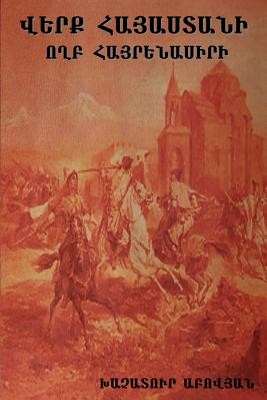
- We will send in 10–14 business days.
- Author: Abovian Khachatur
- Publisher: Bibliotech Press
- Year: 2012
- Pages: 308
- ISBN-10: 1618950592
- ISBN-13: 9781618950598
- Format: 15.2 x 22.9 x 1.8 cm, minkšti viršeliai
- Language: English
- SAVE -10% with code: EXTRA
Reviews
Description
The historical novel Wounds of Armenia (written in 1841, first published in 1858) was the first Armenian secular novel dedicated to the fate of the Armenian people and its struggle for liberation in the period of Russo-Persian war of 1826-1828. The novel dealt with the suffering of Armenians under Persian occupation. The basic concept of the novel was the assertion of feelings of national merit, patriotism and hatred of oppressors. These themes had a profound influence on wide layers of Armenian society. The hero of the novel, Agassi, personifies the freedom-loving national spirit and its will to fight against the foreign conquerors. "Give away your life, but never give away your native lands," is the motto of Agassi and his partisan friends. The story begins with an abduction of an Armenian girl by a band of thugs sent by the Persian sardar that triggers an uprising led by Agassi. Abovian saw in strengthening of the friendship of Russian and Armenian peoples a guarantee of the national, political and cultural revival of his native lands. However; when Abovian wrote the novel he was already disillusioned with Tsarist policies in Armenia, particularly with the implementation of Polozhenie (Statute) in 1836 which greatly reduced the political power of the Armenian Catholicos and the abolishment of the Armenian Oblast in 1840. In the novel, elements of romanticism and realism are interlaced while the narration is supplanted by lyrical retreats.
EXTRA 10 % discount with code: EXTRA
The promotion ends in 21d.13:28:46
The discount code is valid when purchasing from 10 €. Discounts do not stack.
- Author: Abovian Khachatur
- Publisher: Bibliotech Press
- Year: 2012
- Pages: 308
- ISBN-10: 1618950592
- ISBN-13: 9781618950598
- Format: 15.2 x 22.9 x 1.8 cm, minkšti viršeliai
- Language: English English
The historical novel Wounds of Armenia (written in 1841, first published in 1858) was the first Armenian secular novel dedicated to the fate of the Armenian people and its struggle for liberation in the period of Russo-Persian war of 1826-1828. The novel dealt with the suffering of Armenians under Persian occupation. The basic concept of the novel was the assertion of feelings of national merit, patriotism and hatred of oppressors. These themes had a profound influence on wide layers of Armenian society. The hero of the novel, Agassi, personifies the freedom-loving national spirit and its will to fight against the foreign conquerors. "Give away your life, but never give away your native lands," is the motto of Agassi and his partisan friends. The story begins with an abduction of an Armenian girl by a band of thugs sent by the Persian sardar that triggers an uprising led by Agassi. Abovian saw in strengthening of the friendship of Russian and Armenian peoples a guarantee of the national, political and cultural revival of his native lands. However; when Abovian wrote the novel he was already disillusioned with Tsarist policies in Armenia, particularly with the implementation of Polozhenie (Statute) in 1836 which greatly reduced the political power of the Armenian Catholicos and the abolishment of the Armenian Oblast in 1840. In the novel, elements of romanticism and realism are interlaced while the narration is supplanted by lyrical retreats.


Reviews